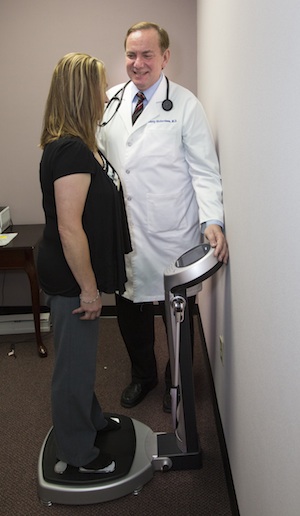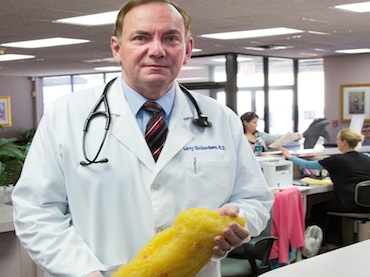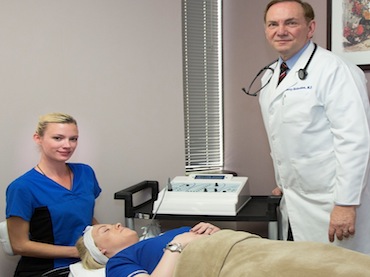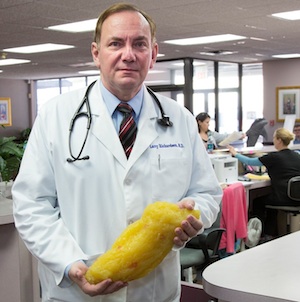- Sections :
- Crime & Public Safety
- Restaurants & Food
- Sports
- More
Categories
Local weight control center concerned kids may be eating themselves to early grave

THE WOODLANDS, Texas -- America is a prosperous nation with an abundant food supply. High-calorie food choices and a decrease in activity levels, however, are leading our youth down a treacherous path. Obesity has doubled in children and quadrupled in adolescents in the past 30 years. Today, 18 percent of American kids are obese, according to the Center for Disease Control, and 33 percent are classified as overweight/obese. While those numbers have plateaued since 2010, child obesity cases are more severe than ever.
In the U.S., childhood obesity is so prevalent, there is a chance that the current generation’s obesity will cause it to have a shorter life expectancy than its parents. According to the CDC, the average life expectancy for an American male born today is almost 79 years, with the number slightly great for women, at 81 years.
"It is important to target and treat obesity at a younger age," says Saif Ahmedi, PAC at Doctor's Weight Control Center in Spring. "Over 20 percent of 4-year olds who are obese will continue to be obese as adults. The number rises to 80 percent among obese teens. Obesity leads to morbidity, osteoarthritis, psychological issues, diabetes and other adverse effects."
Weight control is a two-pronged problem. First, kids need to be educated to make healthy food choices. As one example, school lunches are incorporating healthier fare. Parents, schools, doctors and the community have a role in teaching kids nutritional basics. Knowledge about portion size, calories per serving and balanced meals can help them put together good eating habits.
Unhealthy foods are often marketed to young kids, and nutritional labels may be misleading. For example, granola bars may advertise lots of protein but offer little true nutrition in that regard, while packing a mighty calorie and sugar count. Children need to learn to read food labels and make healthy snack and meal choices.
Hand in hand with healthy eating is exercise. It is healthy for children to go outside to play, but social and socioeconomic factors are leading to an increasingly sedentary lifestyle. The U.S. Department of Health and Human Services suggests that adults do 150 minutes of moderate-intensity exercise and two sessions of muscle-strengthening exercises per week. It suggests that children do 60 minutes of moderate-to-vigorous physical exercise a day. In 2012, only 25 percent of 12 to 15 year olds met that requirement.
TV has beckoned children for generations, but the social-media and other instantly gratifying electronic devices work against kids' natural, calorie-burning playtime. Kids who lack a safe place to play miss out on the activity they need.
What can America do for its children? First, teach them about healthy foods vs. unhealthy foods.
"Education can make a big difference," Ahmedi says. "Many don't realize the amount of calories they're eating, that the kind of nutrition they're getting is important. We teach them how to count calories, what's a densely-packed carb and what's protein. Once the lightbulb goes on, they can identify sugary foods and high-fructose corn syrup in the American diet."
Second, make sure they get outside to play. With 69 percent of Americans 18 and older qualifying as overweight our obese, we can all use the exercise.
For more information on Doctor’s Weight Control Center, go drrichardson.com or call 281.367.0070. DWCC is located at 25000 Pitkin Road, Suite 120 in Spring.
'This may be the first generation to not out live their parents.' Saif Ahmedi, PAC at Doctor's Weight Control Center
In the U.S., childhood obesity is so prevalent, there is a chance that the current generation’s obesity will cause it to have a shorter life expectancy than its parents. According to the CDC, the average life expectancy for an American male born today is almost 79 years, with the number slightly great for women, at 81 years.
"It is important to target and treat obesity at a younger age," says Saif Ahmedi, PAC at Doctor's Weight Control Center in Spring. "Over 20 percent of 4-year olds who are obese will continue to be obese as adults. The number rises to 80 percent among obese teens. Obesity leads to morbidity, osteoarthritis, psychological issues, diabetes and other adverse effects."
Weight control is a two-pronged problem. First, kids need to be educated to make healthy food choices. As one example, school lunches are incorporating healthier fare. Parents, schools, doctors and the community have a role in teaching kids nutritional basics. Knowledge about portion size, calories per serving and balanced meals can help them put together good eating habits.
Unhealthy foods are often marketed to young kids, and nutritional labels may be misleading. For example, granola bars may advertise lots of protein but offer little true nutrition in that regard, while packing a mighty calorie and sugar count. Children need to learn to read food labels and make healthy snack and meal choices.
Hand in hand with healthy eating is exercise. It is healthy for children to go outside to play, but social and socioeconomic factors are leading to an increasingly sedentary lifestyle. The U.S. Department of Health and Human Services suggests that adults do 150 minutes of moderate-intensity exercise and two sessions of muscle-strengthening exercises per week. It suggests that children do 60 minutes of moderate-to-vigorous physical exercise a day. In 2012, only 25 percent of 12 to 15 year olds met that requirement.
TV has beckoned children for generations, but the social-media and other instantly gratifying electronic devices work against kids' natural, calorie-burning playtime. Kids who lack a safe place to play miss out on the activity they need.
What can America do for its children? First, teach them about healthy foods vs. unhealthy foods.
"Education can make a big difference," Ahmedi says. "Many don't realize the amount of calories they're eating, that the kind of nutrition they're getting is important. We teach them how to count calories, what's a densely-packed carb and what's protein. Once the lightbulb goes on, they can identify sugary foods and high-fructose corn syrup in the American diet."
Second, make sure they get outside to play. With 69 percent of Americans 18 and older qualifying as overweight our obese, we can all use the exercise.
For more information on Doctor’s Weight Control Center, go drrichardson.com or call 281.367.0070. DWCC is located at 25000 Pitkin Road, Suite 120 in Spring.
Comments •











